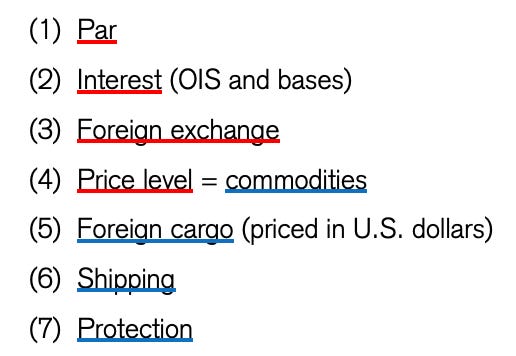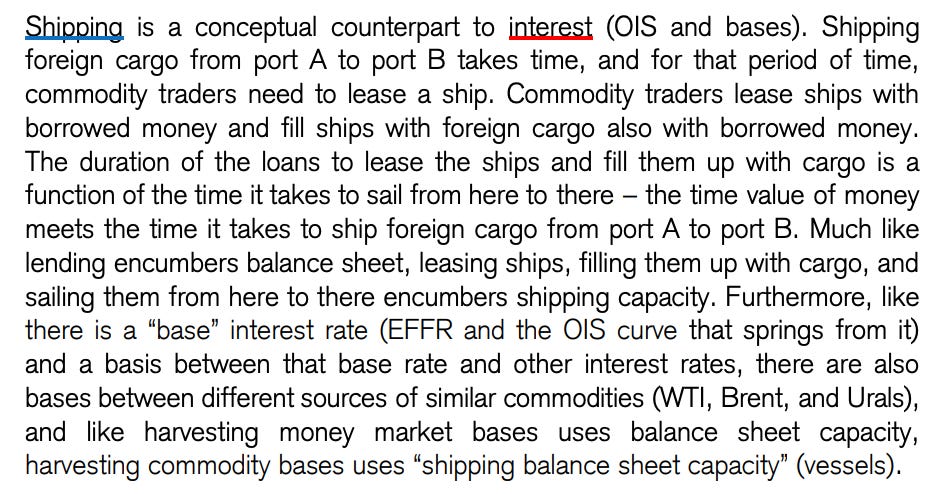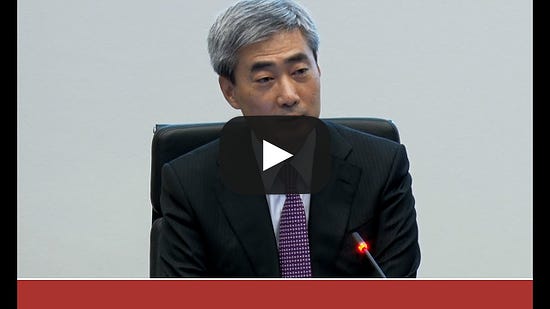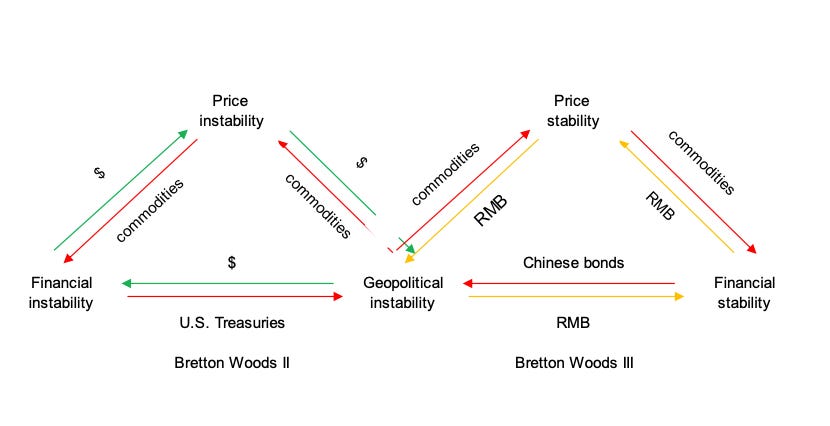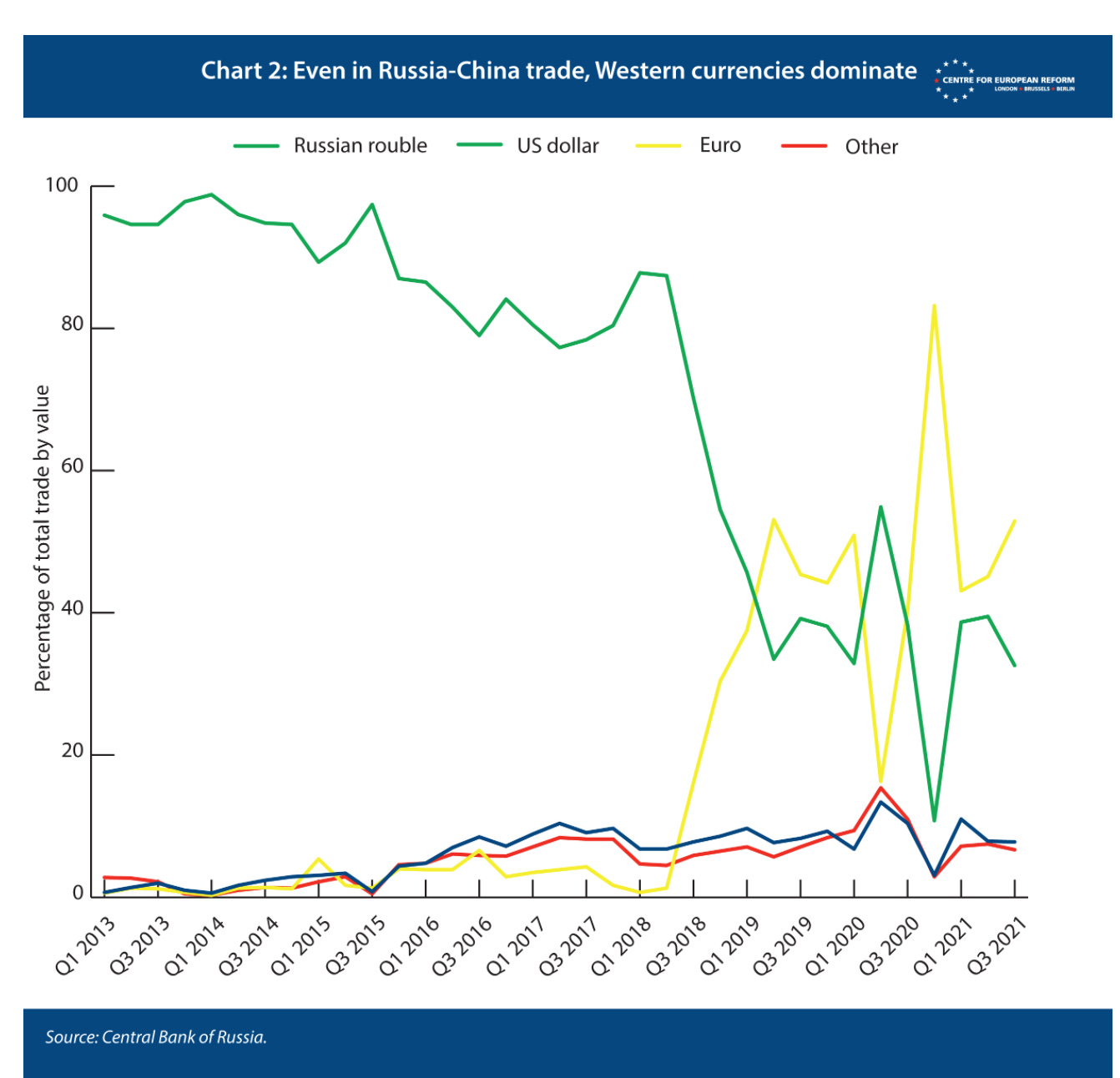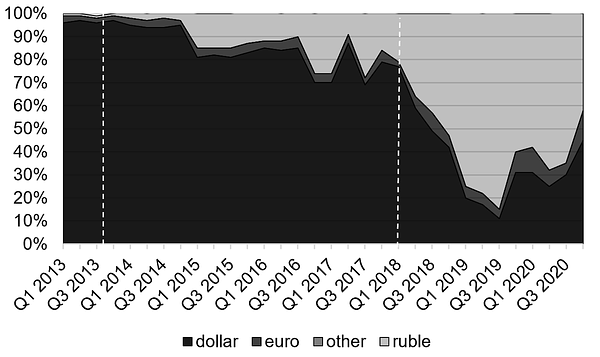De fato, não deveria haver contradição ou oposição entre uma sociedade perfeitamente liberal e o sentimento nacionalista, uma vez que as sociedades atuais estão organicamente e institucionalmente organizadas emEstados nacionais distintos e separados (à exceção da aventura comunitária da UE), em número de aproximadamente 200 nações atualmente (contra pouco mais de 50 no nascimento da ONU, em 1945). Mas, líderes populistas costumam estimular, e excitar, os sentimentos nacionalistas exclusivos do seu próprio povo (que por vezes não é homogêneo ou dotado da mesma língua e religião), para fins de ganhos eleitorais, explorando reações de rejeição em sociedades estressadas por problemas econômicos (recessão, desemprego, inflação, pressões fiscais, previdência, etc.) ou levas imigratórias vindas de regiões miseráveis ou em guerra.
A deterioração da democracia liberal e o crescimento dos regimes iliberais no mundo são fenômenos deveras preocupantesmeste início de um século que enfrenta a possibilidade de novas fricções imperiais, o outro grande desafio à tolerância democrático no mundo e no plano doméstico dos Estados nacionais. A democracia está sob pressão em diversas partes do mundo, inclusive no Brasil. A boa informação e a educação são as respostas adequadas, mas tem muita gente interessada no autoritarismo.
Paulo Roberto de Almeida
Foreign Affairs, Nova York - Maio-Junho 2022
A Country of Their Own
Liberalism Needs the Nation
Francis Fukuyama
Liberalism is in peril. The fundamentals of liberal societies are tolerance of difference, respect for individual rights, and the rule of law, and all are under threat as the world suffers what can be called a democratic recession or even a depression. According to Freedom House, political rights and civil liberties around the world have fallen each year for the last 16 years. Liberalism’s decline is evident in the growing strength of autocracies such as China and Russia, the erosion of liberal—or nominally liberal—institutions in countries such as Hungary and Turkey, and the backsliding of liberal democracies such as India and the United States.
In each of these cases, nationalism has powered the rise of illiberalism. Illiberal leaders, their parties, and their allies have harnessed nationalist rhetoric in seeking greater control of their societies. They denounce their opponents as out-of-touch elites, effete cosmopolitans, and globalists.They claim to be the authentic representatives of their country and its true guardians. Sometimes, illiberal politicians merely caricature their liberal counterparts as ineffectual and removed from the lives of the people they presume to represent. Often, however, they describe their liberal rivals not simply as political adversaries but as something more sinister: enemies of the people.
The very nature of liberalism makes it susceptible to this line of attack. The most fundamental principle enshrined in liberalism is one of tolerance: the state does not prescribe beliefs, identities, or any other kind of dogma. Ever since its tentative emergence in the seventeenth century as an organizing principle for politics, liberalism deliberately lowered the sights of politics to aim not at “the good life” as defined by a particular religion, moral doctrine, or cultural tradition but at the preservation of life itself under conditions in which populations cannot agree on what the good life is. This agnostic nature creates a spiritual vacuum, as individuals go their own ways and experience only a thin sense of community. Liberal political orders do require shared values, such as tolerance, compromise, and deliberation, but these do not foster the strong emotional bonds found in tightly knit religious and ethnonationalist communities. Indeed, liberal societies have often encouraged the aimless pursuit of material self-gratification.
Liberalism’s most important selling point remains the pragmatic one that has existed for centuries: its ability to manage diversity in pluralistic societies. Yet there is a limit to the kinds of diversity that liberal societies can handle. If enough people reject liberal principles themselves and seek to restrict the fundamental rights of others, or if citizens resort to violence to get their way, then liberalism alone cannot maintain political order. And if diverse societies move away from liberal principles and try to base their national identities on race, ethnicity, religion, or some other, different substantive vision of the good life, they invite a return to potentially bloody conflict. A world full of such countries will invariably be more fractious, more tumultuous, and more violent.
That is why it is all the more important for liberals not to give up on the idea of the nation. They should recognize that in truth, nothing makes the universalism of liberalism incompatible with a world of nation-states. National identity is malleable, and it can be shaped to reflect liberal aspirations and to instill a sense of community and purpose among a broad public.
For proof of the abiding importance of national identity, look no further than the trouble Russia has run into in attacking Ukraine. Russian President Vladimir Putin claimed that Ukraine did not have an identity separate from that of Russia and that the country would collapse immediately once his invasion began. Instead, Ukraine has resisted Russia tenaciously precisely because its citizens are loyal to the idea of an independent, liberal democratic Ukraine and do not want to live in a corrupt dictatorship imposed from without. With their bravery, they have made clear that citizens are willing to die for liberal ideals, but only when those ideals are embedded in a country they can call their own.
LIBERALISM’S SPIRITUAL VACUUM
Liberal societies struggle to present a positive vision of national identity to their citizens. The theory behind liberalism has great difficulties drawing clear boundaries around communities and explaining what is owed to people inside and outside those boundaries. This is because the theory is built on top of a claim of universalism. As asserted in the Universal Declaration of Human Rights, “All human beings are born free and equal in dignity and rights”; further, “Everyone is entitled to all the rights and freedoms set forth in this Declaration, without distinction of any kind, such as race, colour, sex, language, religion, political or other opinion, national or social origin, property, birth or other status.” Liberals are theoretically concerned with violations of human rights no matter where in the world they occur. Many liberals dislike the particularistic attachments of nationalists and imagine themselves to be “citizens of the world.”
The claim of universalism can be hard to reconcile with the division of the world into nation-states. There is no clear liberal theory, for instance, on how to draw national boundaries, a deficit that has led to intraliberal conflicts over the separatism of regions such as Catalonia, Quebec, and Scotland and disagreements over the proper treatment of immigrants and refugees. Populists, such as former U.S. President Donald Trump, have channeled that tension between the universalist aspirations of liberalism and the narrower claims of nationalism to powerful effect.
Nationalists complain that liberalism has dissolved the bonds of national community and replaced them with a global cosmopolitanism that cares about people in distant countries as much as it cares for fellow citizens. Nineteenth-century nationalists based national identity on biology and believed that national communities were rooted in common ancestry. This continues to be a theme for certain contemporary nationalists, such as Hungarian Prime Minister Viktor Orban, who has defined Hungarian national identity as being based on Magyar ethnicity. Other nationalists, such as the Israeli scholar Yoram Hazony, have sought to revise twentieth-century ethnonationalism by arguing that nations constitute coherent cultural units that allow their members to share thick traditions of food, holidays, language, and the like. The American conservative thinker Patrick Deneen has asserted that liberalism constitutes a form of anticulture that has dissolved all forms of preliberal culture, using the power of the
Significantly, Deneen and other conservatives have broken with economic neoliberals and have been vocal in blaming market capitalism for eroding the values of family, community, and tradition. As a result, the twentieth-century categories that defined the political left and right in terms of economic ideology do not fit the present reality neatly, with right-wing groups being willing to countenance the use of state power to regulate both social life and the economy.
There is considerable overlap between nationalists and religious conservatives. Among the traditions that contemporary nationalists want to preserve are religious ones; thus, the Law and Justice party in Poland has been closely aligned with the Polish Catholic Church and has taken on many of the latter’s cultural complaints about liberal Europe’s support for abortion and same-sex marriage. Similarly, religious conservatives often regard themselves as patriots; this is certainly true for the American evangelicals who formed the core of Trump’s “Make America Great Again” movement.
The substantive conservative critique of liberalism—that liberal societies provide no strong common moral core around which community can be built—is true enough. This is indeed a feature of liberalism, not a bug. The question for conservatives is whether there is a realistic way to turn back the clock and reimpose a thicker moral order. Some U.S. conservatives hope to return to an imagined time when virtually everyone in the United States was Christian. But modern societies are far more diverse religiously today than at the time of Europe’s religious wars in the sixteenth century. The idea of restoring a shared moral tradition defined by religious belief is a nonstarter. Leaders who hope to effect this kind of restoration, such as Narendra Modi, India’s Hindu nationalist prime minister, are inviting oppression and communal violence. Modi knows this all too well: he was chief minister of the western state of Gujarat when it was racked by communal riots in 2002 that left thousands dead, mostly Muslims. Since 2014, when Modi became prime minister, he and his allies have sought to tie Indian national identity to the masts of Hinduism and the Hindi language, a sea change from the secular pluralism of India’s liberal founders.
THE INESCAPABLE STATE
Illiberal forces around the world will continue to use appeals to nationalism as a powerful electoral weapon. Liberals may be tempted to dismiss this rhetoric as jingoistic and crude. But they should not cede the nation to their opponents.
All societies need to make use of force, both to preserve internal order and to protect themselves from external enemies. A liberal society does this by creating a powerful state but then constraining the state’s power under the rule of law. The state’s power is based on a social contract among autonomous individuals who agree to give up some of their rights to do as they please in return for the state’s protection. It is legitimized by both the common acceptance of the law and, if it is a liberal democracy, popular elections.
Liberal rights are meaningless if they cannot be enforced by a state, which, according to the German sociologist Max Weber’s famous definition, is a legitimate monopoly of force over a defined territory. The territorial jurisdiction of a state necessarily corresponds to the area occupied by the group of individuals who signed on to the social contract. People living outside that jurisdiction must have their rights respected, but not necessarily enforced, by that state.
States with a delimited territorial jurisdiction therefore remain critical political actors, because they are the only ones able to exercise a legitimate use of force. In today’s globalized world, power is employed by a wide variety of bodies, from multinational corporations to nonprofit groups to terrorist organizations to supranational bodies such as the European Union and the United Nations. The need for international cooperation in addressing issues such as global warming and pandemics has never been more evident. But it remains the case that one particular form of power, the ability to enforce rules through the threat or the actual use of force, remains under the control of nation-states. Neither the European Union nor the International Air Transport Association deploys its own police or army to enforce the rules it sets. Such organizations still depend on the coercive capacity of the countries that empowered them. To be sure, there is today a large body of international law that in many domains displaces national-level law; think, for example, of the European Union’s acquis communautaire, which serves as a kind of common law to regulate commerce and settle disputes. But in the end, international law continues to rely on national-level enforcement. When EU member states disagree on important matters of policy, as they did during the euro crisis of 2010 and the migrant crisis of 2015, the outcome is decided not by European law but by the relative power of the member states. Ultimate power, in other words, continues to be the province of nation-states, which means that the control of power at this level remains critical.
There is thus no necessary contradiction between liberal universalism and the need for nation-states. Although the normative value of human rights may be universal, enforcement power is not; it is a scarce resource that is necessarily applied in a territorially delimited way. A liberal state is perfectly justified in granting different levels of rights to citizens and noncitizens, because it does not have the resources or the writ to protect rights universally. All people within the state’s territory are due the equal protection of the law, but only citizens are full participants in the social contract, with special rights and duties, in particular the right to vote.
The fact that states remain the locus of coercive power should inspire caution about proposals to create new supranational bodies and to delegate such power to them. Liberal societies have had several hundred years of experience learning how to constrain power at a national level through rule-of-law and legislative institutions and how to balance power so that its use reflects general interests. They have no idea how to create such institutions at a global level, where, for example, a global court or legislature would be able to constrain the arbitrary decisions of a global executive. The European Union is the product of the most serious effort to do this at a regional level; the result is an awkward system characterized by excessive weakness in some domains (fiscal policy, foreign affairs) and excessive power in others (economic regulation). Europe at least has a certain common history and cultural identity that do not exist at the global level. International institutions such as the International Court of Justice and the International Criminal Court continue to rely on states to enforce their writs.
The German philosopher Immanuel Kant imagined a condition of “perpetual peace” in which a world populated by liberal states would regulate international relations through law rather than by resorting to violence. Putin’s invasion of Ukraine has demonstrated, unfortunately, that the world has not yet reached this post-historical moment and that raw military power remains the ultimate guarantor of peace for liberal countries. The nation-state is therefore unlikely to disappear as the crucial actor in global politics.
THE GOOD LIFE
The conservative critique of liberalism contains, at its core, a reasonable skepticism of the liberal emphasis on individual autonomy. Liberal societies assume an equality of human dignity, a dignity that is rooted in an individual’s ability to make choices. For that reason, they are dedicated to protecting that autonomy as a matter of basic rights. But although autonomy is a fundamental liberal value, it is not the sole human good that automatically trumps all other visions of the good life.
The realm of what is accepted as autonomy has steadily expanded over time, broadening from the choice to obey rules within an existing moral framework to making up those rules for oneself. But respect for autonomy was meant to manage and moderate the competition of deeply held beliefs, not to displace those beliefs in their entirety. Not every human being thinks that maximizing his or her personal autonomy is the most important goal of life or that disrupting every existing form of authority is necessarily a good thing. Many people are happy to limit their freedom of choice by accepting religious and moral frameworks that connect them with other people or by living within inherited cultural traditions. The U.S. Constitution’s First Amendment was meant to protect the free exercise of religion, not to protect citizens from religion.
Successful liberal societies have their own culture and their own understanding of the good life, even if that vision may be thinner than those offered by societies bound by a single doctrine. They cannot be neutral with regard to the values that are necessary to sustain themselves as liberal societies. They need to prioritize public-spiritedness, tolerance, open-mindedness, and active engagement in public affairs if they are to cohere. They need to prize innovation, entrepreneurship, and risk-taking if they are to prosper economically. A society of inward-looking individuals interested only in maximizing their personal consumption will not be a society at all.
States are important not just because they are the locus of legitimate power and the instruments for controlling violence. They are also a singular source of community. Liberal universalism on one level flies in the face of the nature of human sociability. People feel the strongest bonds of affection for those closest to them, such as friends and family; as the circle of acquaintance widens, their sense of obligation inevitably attenuates. As human societies have grown larger and more complex over the centuries, the boundaries of solidarity have expanded dramatically from families and villages and tribes to entire countries. But few people love humanity as a whole. For most people around the world, the country remains the largest unit of solidarity to which they feel an instinctive loyalty. Indeed, that loyalty becomes a critical underpinning of the state’s legitimacy and thus its ability to govern. In certain societies, a weak national identity can have disastrous consequences, as is evident in some struggling developing countries, such as Myanmar and Nigeria, and in some failed states, such as Afghanistan, Libya, and Syria.
THE CASE FOR LIBERAL NATIONALISM
This argument may seem similar to ones made by Hazony, the conservative Israeli scholar, in his 2018 book, The Virtue of Nationalism, in which he advocates a global order based on the sovereignty of nation-states. He makes an important point in warning against the tendency of liberal countries, such as the United States, to go too far in seeking to remake the rest of the world in their own image. But he is wrong in assuming that the existing countries are clearly demarcated cultural units and that a peaceful global order can be built by accepting them as they are. Today’s countries are social constructions that are the byproducts of historical struggles that often involved conquest, violence, forced assimilation, and the deliberate manipulation of cultural symbols. There are better and worse forms of national identity, and societies can exercise agency in choosing among them.
In particular, if national identity is based on fixed characteristics such as race, ethnicity, or religious heritage, then it becomes a potentially exclusionary category that violates the liberal principle of equal dignity. Although there is no necessary contradiction between the need for national identity and liberal universalism, there is nonetheless a powerful potential point of tension between the two principles. When based on fixed characteristics, national identity can turn into aggressive and exclusive nationalism, as it did in Europe during the first part of the twentieth century.
For this reason, liberal societies should not formally recognize groups based on fixed identities such as race, ethnicity, or religious heritage. There are times, of course, when this becomes inevitable, and liberal principles fail to apply. In many parts of the world, ethnic or religious groups have occupied the same territory for generations and have their own thick cultural and linguistic traditions. In the Balkans, the Middle East, South Asia, and Southeast Asia, ethnic or religious identity is de facto an essential characteristic for most people, and assimilating them into a broader national culture is highly unrealistic. It is possible to organize a form of liberal politics around several cultural units; India, for example, recognizes multiple national languages and has in the past permitted its states to set their own policies with regard to education and legal systems. Federalism and the concomitant devolution of powers to subnational units are often necessary in such diverse countries. Power can be formally allocated to different groups defined by their cultural identity in a structure that political scientists call “consociationalism.” Although this has worked reasonably well in the Netherlands, the practice has been disastrous in places such as Bosnia, Iraq, and Lebanon, where identity groups see themselves locked in a zero-sum struggle. In societies in which cultural groups have not yet hardened into self-regarding units, it is therefore much better to deal with citizens as individuals rather than as members of identity groups.
On the other hand, there are other aspects of national identity that can be adopted voluntarily and therefore shared more broadly, such as literary traditions, historical narratives, and language, food, and sports. Catalonia, Quebec, and Scotland are all regions with distinct historical and cultural traditions, and they all include nationalist partisans seeking complete separation from the country to which they are linked. There is little doubt that these regions would continue to be liberal societies respecting individual rights were they to separate, just as the Czech Republic and Slovakia did after they became separate countries in 1993.
National identity represents obvious dangers but also an opportunity. It is a social construct, and it can be shaped to support, rather than undermine, liberal values. Many countries have historically been molded out of diverse populations that feel a strong sense of community based on political principles or ideals rather than deterministic group categories. Australia, Canada, France, India, and the United States are all countries that in recent decades have sought to construct national identities based on political principles rather than race, ethnicity, or religion. The United States has gone through a long and painful process of redefining what it means to be an American, progressively removing barriers to citizenship based on class, race, and gender—although this process is still incomplete and has experienced many setbacks. In France, the construction of a national identity began with the French Revolution’s Declaration of the Rights of Man and of the Citizen, which established an ideal of citizenship based on a common language and culture. In the mid-twentieth century, Australia and Canada were countries with dominant white-majority populations and restrictive laws regarding immigration and citizenship, such as the notorious “White Australia” policy, which kept out immigrants from Asia. Both, however, reconstructed their national identities on nonracial lines after the 1960s and opened themselves up to massive immigration. Today, both countries have larger foreign-born populations than does the United States, with little of the United States’ polarization and white backlash.
Nonetheless, the difficulty of forging a common identity in sharply divided democracies should not be underestimated. Most contemporary liberal societies were built on top of historical nations whose understandings of national identity had been forged through illiberal methods. France, Germany, Japan, and South Korea were all nations before they became liberal democracies; the United States, as many have noted, was a state before it became a nation. The process of defining the American nation in liberal political terms has been long, arduous, and periodically violent, and even today that process is being challenged by people on both the left and the right with sharply competing narratives about the country’s origins.
Liberalism would be in trouble if people saw it as nothing more than a mechanism for peacefully managing diversity, without a broader sense of national purpose. People who have experienced violence, war, and dictatorship generally long to live in a liberal society, as Europeans did in the period after 1945. But as people get used to a peaceful life under a liberal regime, they tend to take that peace and order for granted and start longing for a politics that will direct them to higher ends. In 1914, Europe had been largely free of devastating conflict for nearly a century, and masses of people were happy to march off to war despite the enormous material progress that had occurred in the interim.
The world has perhaps arrived at a similar point in human history: it has been free from large-scale interstate war for three-quarters of a century and has, in the meantime, seen a massive increase in global prosperity that has produced equally massive social change. The European Union was created as an antidote to the nationalism that had led to the world wars and in that respect has been successful beyond all hopes. But Russia’s invasion of Ukraine augurs more disarray and violence ahead.
At this juncture, two very different futures present themselves. If Putin is successful in undermining Ukrainian independence and democracy, the world will return to an era of aggressive and intolerant nationalism reminiscent of the early twentieth century. The United States will not be immune from this trend, as populists such as Trump aspire to replicate Putin’s authoritarian ways. On the other hand, if Putin leads Russia into a debacle of military and economic failure, the chance remains to relearn the liberal lesson that power unconstrained by law leads to national disaster and to revive the ideals of a free and democratic world
FRANCIS FUKUYAMA is Olivier Nomellini Senior Fellow at the Freeman Spogli Institute for International Studies at Stanford University and the author of the forthcoming book Liberalism and Its Discontents (Farrar, Straus and Giroux, 2022), from which this essay is adapted.
